Best e-bike helmets: Better protection for higher speeds
The best e-bike helmets have commuter-friendly features and are designed for higher-speed, higher-momentum protection
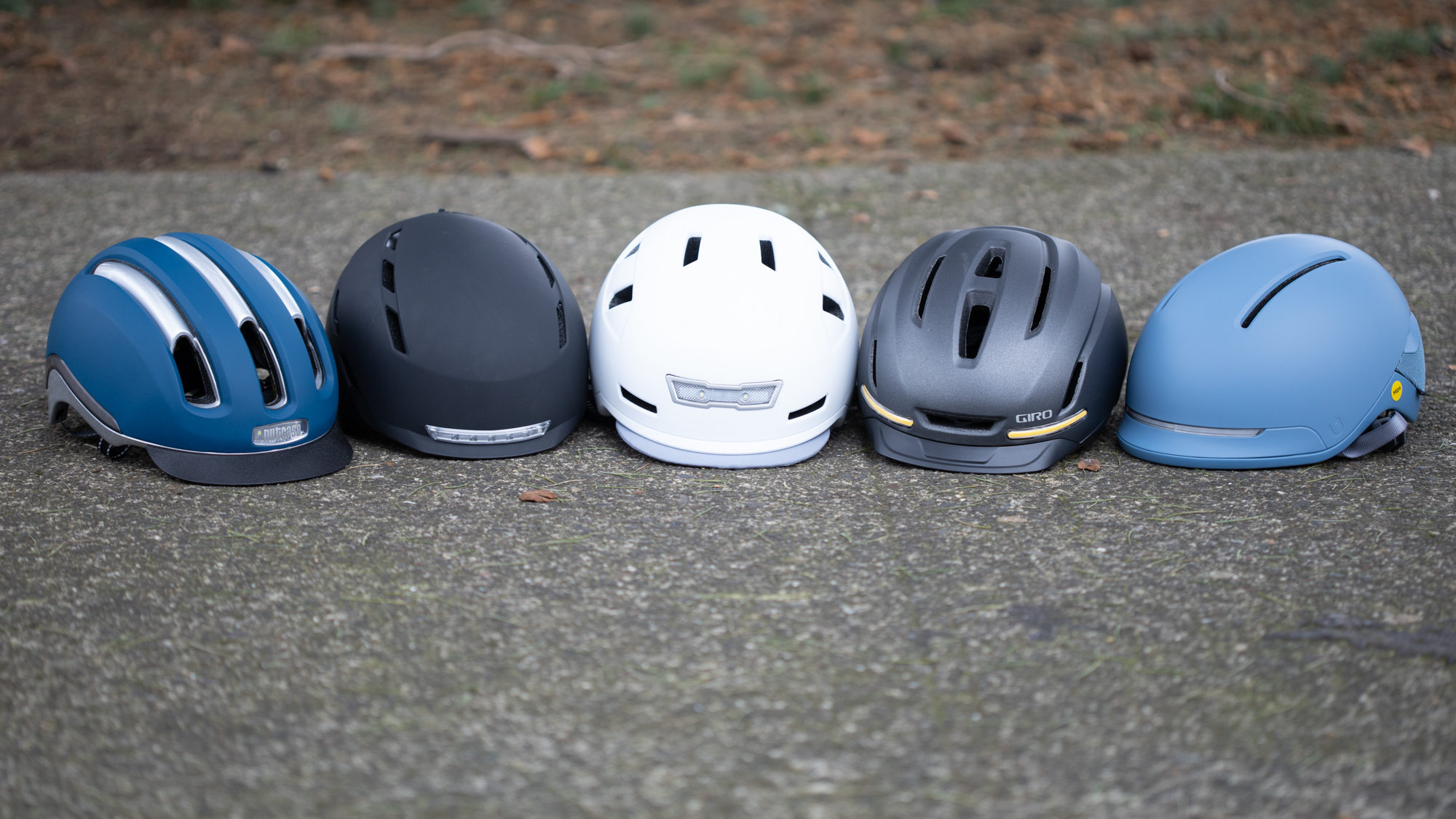
The best e-bike helmets are designed to offer better protection for riders of electric bikes. As e-bikes are faster and weigh more, there's greater momentum if you crash, which creates higher forces and thus extra protection is needed.
This is true for riders in the UK and Europe, where the best electric bike motors are speed-limited to 15.5mph/25kph. But even more significant for riders in the US, where some e-bikes can assist you at speeds up to 28mph, and the rest can do so up to 20mph.
These are reasons to prefer an electric bike helmet, even over the best commuter helmets or the best road bike helmets. I've also looked at comfort, weight, added features and general usability in bringing you my recommendations. MIPS is found in many of the best e-bike helmets, and we have an explainer on what a MIPS helmet is if you want to know more.
My top e-bike helmet choice is the Giro Camden MIPS, while the Xnito helmet is similar but much lighter. If neither of those works for you, though, keep reading to see my full list of recommendations for the best e-bike helmets available today.
If you are looking for advice on how to choose the best e-bike helmet, there's more in our buyer's guide, lower down this page.
Quick list: Best e-bike helmets
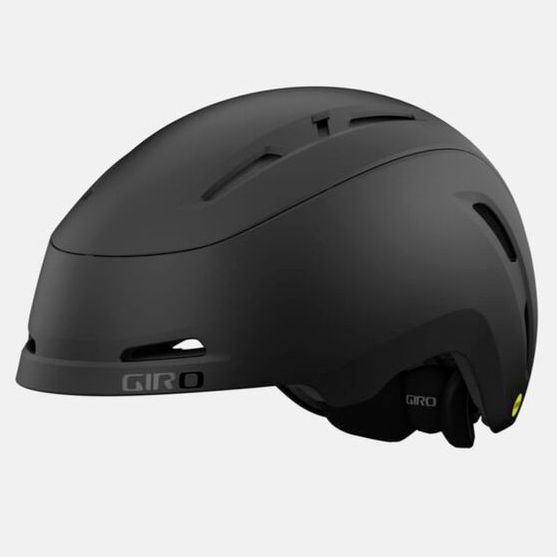
Big bright integrated lighting, vents you can open and close, a magnetic buckle, and the NTA 8776 e-bike certification make a great overall package.

The Specialized Mode hits a budget price by pairing down the features a little and focusing on safety.
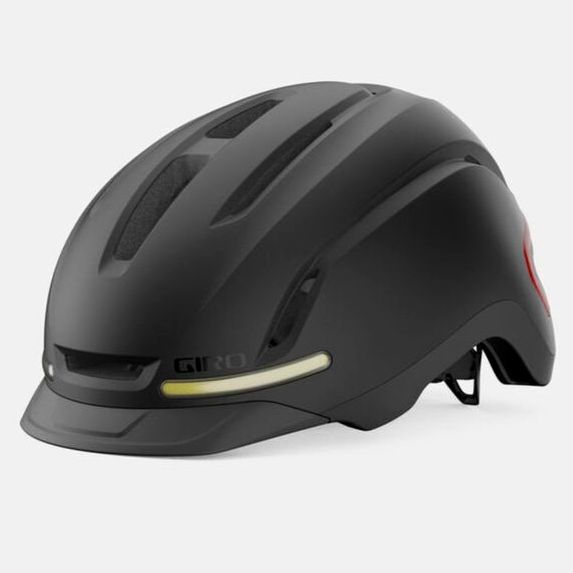
Best with turn signals
If you like the idea of integrated lighting but also want to be able to signal when turning, the Giro Ethos MIPS is a great choice.

The POC Crane uses an ABS outer shaped into an urban, skater style, helmet to combine safety, durability and style in one.
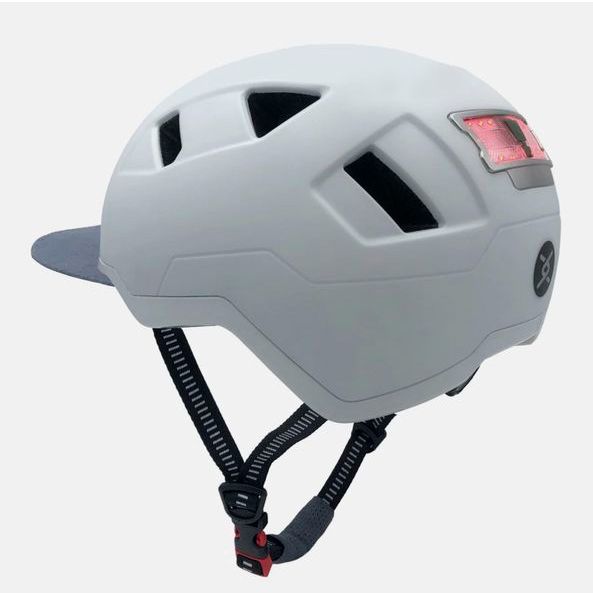
Lightweight and stylish, but more importantly, the Xnito helmet adds the NTA 8776 e-bike certification without adding lots of weight.

Urban helmets sometimes have to deal with a rough life. If that’s a consideration for you, the Kask Moebius uses an ABS outer that can take a knock or two on the bus and continue to be usable.
Last updated 24th October 2025 All products checked for availability, How to Choose section added and FAQs updated. to ensure information is current and improve readability.
Best e-bike helmets available today
You can trust Cyclingnews
Best overall

1. Giro Camden MIPS
Specifications
Reasons to buy
Reasons to avoid
✅ You want adjustable vents: If you plan on commuting in all weathers, the Camden's vents can be opened on warm days and closed on cold or wet days.
✅ You want a big rear light: A large light panel at the back will make you more visible in traffic.
✅ You want rotational impact protection: The MIPS system is designed to help reduce the chances of a concussion in a crash.
❌ You want a light helmet: While it's not particularly weighty, it's quite a bit heavier than several other helmets in this guide.
One of the big reasons you might consider an e-bike-specific helmet is the added speed and weight of e-bikes. As I said above, this is especially true in the US, where speeds end up being in-between a bike and a motorcycle. If that's a consideration for you, the Dutch NTA 8776 certification mandates greater coverage and higher drop tests. It's not clear-cut that it's absolutely necessary, but it's not going to hurt, and the Giro Camden adds it as just one of the things that make it a great helmet.
The reason this helmet gets my nod as the best overall is that there are way more features outside of the extra certification. You also get a big, bright rear light, an integrated brim, and vents you can close when it's cold and rainy. The padding is comfortable and there's a magnetic buckle closure. It ends up being a really great feeling helmet to wear.
The positives are plenty to overcome any negatives, but as you consider, you will also want to keep in mind that there are some downsides. One big one is that Giro hasn't submitted the helmet for testing with Virginia Tech. That always leaves a question, even if it shouldn't. On top of that, it's a heavy helmet, and the light still uses a micro-USB cord to charge.
Best budget e-bike helmet

2. Specialized Mode
Specifications
Reasons to buy
Reasons to avoid
✅ You want a helmet with proven safety credentials: An impressive Virginia Tech score and Dutch NTA 8776 certification back up the helmet's protection claims.
✅ You want a premium-looking helmet at a great price: The clean aesthetics give a very premium look, but at an affordable price point.
❌ You want integrated lights: A light can be mounted to the helmet, but it is not neatly integrated into the helmet shell.
There are a few helmets on this list that add the Dutch NTA 8776 certification. Although it's not entirely clear that it's necessary, having the certification means that the helmet has passed a higher drop test and has a design with lower sides. It's hard to see how that could be a bad thing except that it often comes in tandem with a higher price. The Specialized Mode helmet bucks the trend with both a bargain price and the NTA 8776 certification. On top of that, there's also a MIPS liner. Unfortunately, it's the older style MIPS liner that's less loved, but despite that, the Specialized Mode is one of the top ten highest rated helmets from Virginia Tech.
Although a high Virginia Tech rating is impressive, it doesn't take into account passive safety in the form of lights. Compared to the Xnito, and Giro, helmets that also carry the NTA 8776 certification, the Mode lacks integrated lighting. Specialized does address that shortcoming. If you'd like to add a rear light, then there's a small rubber mount that integrates into the design and carries an optional Stix light from our list of the best budget bike lights. Even with the purchase of the light, you'd still come out ahead on pricing compared to other NTA 8776 options. Unfortunately, you will have to deal with fingerprints and the matte outer will scratch easily if you lean it against a wall.
Best with bright lights

Specifications
Reasons to buy
Reasons to avoid
✅ You want advanced smart features: Turn signals, emergency call-out features, built-in light sensors and customisation via an app make this a thoroughly modern helmet.
❌ You want a light helmet: At 630g this is a heavy helmet which could become uncomfortable if worn for a long period of time.
The Unit 1 Faro is what you might call a smart helmet. Like other helmets, you will find built-in lights front and rear, but in this helmet, you can connect via an app and customise the experience. On top of that, there are turn signals that you can use with the included signal buttons mounted on your handlebars, and if you ever have an incident, then there's an emergency call feature. There's even a light sensor built in that alters the brightness depending on ambient light conditions.
Another feature that is nice to see is that, like a few other helmets here, the Unit 1 uses an ABS outer. ABS is a good choice for urban helmets because, unlike the typical polycarbonate used for helmets, it can take some knocks. Scrape it along a wall and you'll still have a helmet you can use. The only downsides of all the features are that the fabric rear is difficult to clean, and it ends up being a heavy helmet.
You can read more details in our full Unit 1 Faro review.
Best with turn signals

Specifications
Reasons to buy
Reasons to avoid
✅ You want turn signals: Handlebar-controlled turn signals will be available to riders who are nervous about taking their hands off the handlebars or want to make their next move as clear as possible.
✅ You want MIPS: Giro has specced a MIPS liner for rotational impact protection.
❌ You want an affordable commuting option: All the extra features add a considerable amount of extra cost.
The Ethos MIPS is a stylish addition to the expanding Giro range of commuter and e-bike-specific helmets. There are 12 vents to aid cooling, along with coverage around the back of the ears and at the rear of the head, making for a safe yet comfortable fit. At the front, you will find a rubberised TPU brim that won't add much in the way of protection but does help keep the sun out of your eyes. Although I've featured the version without it, there is also a version with a shield if you'd prefer it.
The main feature I've called out for this helmet is the lighting. At the front of the helmet, you'll find a pair of white LED strips on either side. Then, at the rear, there's another pair, but this time in red. Use the included wireless turn signal buttons, and you'll be able to signal a turn to other road users.
The turn signal feature is also offered by the Unit 1, but that helmet adds a bit more weight and smart features. The two are certainly similar, but it's likely that riders will prefer the style of one over the other. If you really just want turn signals, choose the Giro. It is a bit unfortunate that there's no discount for less functionality with the Giro.
You can read more details in our full Giro Ethos MIPS review.
Best for urban style

5. POC Crane MIPS
Specifications
Reasons to buy
Reasons to avoid
✅ You want large vents: The large vents are great for letting hot air out at slow and faster speeds.
✅ You want rotational impact protection: POC has specced the Crane with a MIPS liner.
❌ You don't want the older MIPS design: The older MIPS liner isn't as universally comfortable as newer designs.
Style matters when picking a helmet. It's okay if that's part of your buying decision, nothing wrong with that, and you might like an urban or skater-style helmet. If so, the POC Crane MIPS uses the familiar shape of a skater-style helmet then marries it to a thoughtful design. There are big vents that do a great job letting hot air out, and the outer is a thick polycarbonate construction with the extra coverage typical of this style of helmet. Instead of the light, but delicate, outer you’ll find on many cycling helmets, the POC Crane MIPS outer can take a bump or two and continue to keep you safe. Despite that, at 411 grams for a size M/L, POC has kept it to a reasonable weight. There’s also an included brim if you prefer something to help keep the sun or rain out of your eyes.
Although this is a great helmet, the one thing I’d love to see changed is the MIPS part of the helmet. While POC and other brands have mostly moved past the first-generation MIPS with the large plastic inner, this helmet still uses it. It’s not a huge problem in a skate-style helmet as the liner mirrors the large blocky cuts of the outer, but it still seems like a throwback to an older technology.
Best for ventilation
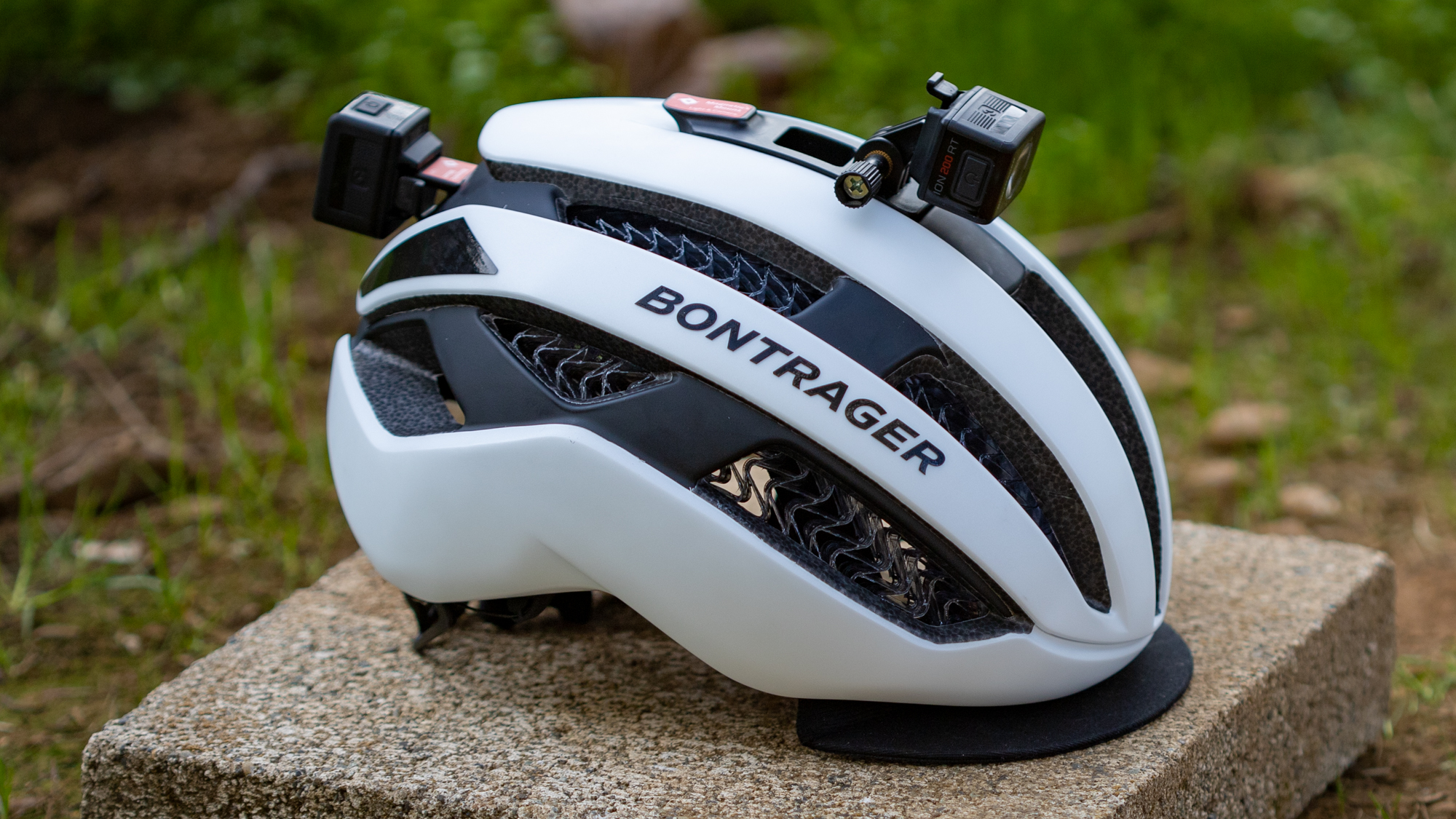
Specifications
Reasons to buy
Reasons to avoid
✅ You want a more road-style helmet: Circuit Wavecel helmet is the commuter option that looks more similar to a road helmet.
✅ You want removable light mounts: If you don't need lights, they can be removed.
❌ You want lights to be included with the helmet: The Ion 200 RT / Flare RT bike light set works well, but is an additional purchase.
As long as you are thinking about ventilation, the urban style might not be your thing. If you'd prefer something more akin to what is typical of a road bike, Trek has an option. The Bontrager Circuit Wavecel helmet is the commuter option in the Trek helmet model lineup. The same product has now been rebranded as a Trek product.
What's unique about the Trek Circuit is both the Wavecel material and its adaptability. As far as Wavecel, the idea is to replace some of the foam and a MIPS liner with a material that is lighter but crushes and allows movement in a crash. It makes for better integration and a lighter helmet that has an easier time releasing heat. Unfortunately, it also means you can't reach your head if you have an itch. On the other hand, the overall style is, as mentioned, about the same as you'd expect from a road race helmet. When you are commuting by e-bike, add a brim or lights, then for a weekend ride, just strip it down and you are ready to go on your road bike. The rear mount is a little fiddly, but overall, it's a great option for every situation.
You can find more details in our full Bontrager Circuit Wavecel review.
Best for all-around lighting

Specifications
Reasons to buy
Reasons to avoid
✅ You want to do a little more than commuting: Great ventilation adds a touch more versatility to this commuter-specific helmet.
✅ You want improved visibility: Side illumination enhances visibility on the road.
❌ You want a lot of adjustment: Minimal adjustment and only two sizes may limit fit for riders.
For active safety, the Nutcase Vio includes lights on every side, with a white light up front, amber lights on the sides, and red lights at the back, offering 360-degree illumination, rather than the more usual rear and sometimes front lights.
Sticking with the theme of style in your e-bike helmet, you've got something that works for a gravel bike. You can obviously use this helmet with any bike you want, but it just happens to have a style that also lends itself to a gravel bike.
Style and lights aren't all that the Nutcase Vio has going for it though. On top of style, it also includes plenty of venting and passive safety in the form of MIPS alongside a dual-density EPS foam liner.
The only thing you might need to watch out for is fit. There are only two sizes, and there's no vertical adjustment to the rear cradle.
You can find more details in our full Nutcase Vio MIPS review.
Best for scratch resistance

Specifications
Reasons to buy
Reasons to avoid
✅ You want to ride in warm weather: The wide front vent and air channels offer plenty of airflow.
✅ You want hardwearing materials: Scratch-resistant materials keep the helmet looking better for longer.
❌ You have a small head: Kask's sizing for the Moebius doesn't accommodate smaller heads well.
Urban helmets have to put up with a lot of wear and tear that something from our list of the best aero helmets will never experience. In and out of bags, sliding along a wall while clipped to the outside of a bag, keys dropped alongside in a bag, any number of day-to-day activities that will scratch up a shiny finish in no time. For the Moebius, Kask uses a scratch-resistant ABS outer that should do a good job keeping the helmet looking nice for a long time to come. It’s an important feature because the outer surface of a helmet is part of what helps keep its integrity. Although looks matter, this is a feature that goes beyond just looks.
In fact, much of what Kask offers goes beyond what you can see on the surface. Instead of MIPS, or other rotational impact protection technologies, Kask takes the stance that those technologies oversell an unnecessary need. Instead, the brand has the WG11 test showing that even without specific mitigation technologies, there is enough protection. Given how complex the field of impact protection is, it may well be correct. Not only that, but a comfortable helmet that is a joy to wear is always going to be a plus and Kask makes some of the most comfortable helmets on the market.
ABS is a feature that the Unit 1 Faro and POC Crane above also provide. You'll need to decide whether the smart features of the Faro or the skate style of the Crane are for you, or whether the Kask is the better choice.
If you want to hear more details, take a look at our full Kask Moebius review.
Best lightweight e-bike helmet

Specifications
Reasons to buy
Reasons to avoid
✅ You want a comfortable helmet: There is plenty of adjustment to ensure a good fit and the low weight makes it more comfortable to wear.
✅ You want an e-bike-certified helmet: The helmet meets the Dutch helmet certification called NTA 8776, which focuses on protection at higher speeds.
❌ You want good ventilation: We found airflow was lacking, so if you live in a hot climate, there are better options.
❌ You want enhanced nighttime visibility: It has lights, but they aren't bright enough to bolster safety.
The truth is that the Xnito bike helmet packs a ton of style into the design. In fact, the brand doesn't actually name its helmet model other than by the rotating styles offered. Still, that's not why the Xnito helmet makes the list. Xnito makes the list because of the Dutch NTA 8776 certification.
The Dutch NTA 8776 certification mandates a high drop test and lower sides to the helmet, and it's specifically designed for e-bike riders. This isn't the only helmet on the list that has that feature. The Giro Camden MIPS has the same certification while also packing in a big light and MIPS. That leaves the Xnito a good option for anyone who really wants the certification but prefers a lighter helmet. You still get lights here too, they just aren't as big and bright as the ones on the rear of the Camden. On the upside, you do get a stylish fabric brim.
Despite the focus on e-bike safety, there's no MIPS here. To be fair, MIPS isn't the only way to get the job done. The bigger challenge with this helmet is that there's no MIPS and a lack of Virginia Tech testing. Although it meets all the required standards, it's always nice to have independent testing.
If you want to hear more details, take a look at our full Xnito helmet review.
Best for sustainability

10. POC Myelin
Specifications
Reasons to buy
Reasons to avoid
✅ You want environmental sustainability: The Myelin is made from recyclable materials and can be broken down and disposed of at the end of the helmet's life.
✅ You want a great-looking helmet: The material finish gives it a great aesthetic.
❌ You want rotational protection: The POC Myelin doesn't have a MIPS or alternative rotational impact protection technology.
❌ You want built-in lights: There are no additional lights built into the helmet.
The POC Myelin is unlike anything else you can buy. It starts with a commuter outline with a solid colour and fabric over most of the shell. Although you can't see it through the fabric, there is a ton of venting at the top of the helmet plus there's a vent at the brow to help push the air through. Obviously none of this is dramatically different. Where things start to change is in the construction.
The materials themselves are 50% recycled but more than that, the construction keeps end of life front of mind. You won't find any glue and there are no laminated materials. Everything is mechanically secured so that when it's time to dispose of the helmet you can break down all the pieces. From there, take each piece and dispose of it as required in your area.
At the end of the day, there are some drawbacks. The Myelin doesn't have features like lights, it has no rotational impact protection technology, and it lacks a Virginia Tech score. Still, it's a first step and it's important to highlight that it exists. Helmets are some of the hardest things to deal with when they reach the end of life. If you care about sustainability, this is the helmet for you.
How to choose the best e-bike helmet for you
There are a lot of choices of helmets out there. It's worth considering if you want an e-bike-specific helmet or whether a more generic urban helmet will work for you. To a large extent, that depends on where you live and what you're riding.
If your e-bike is capable of higher speeds, an e-bike-specific helmet is a wise choice, whereas riders of lower-speed e-bikes may prefer an urban style, or even a road bike helmet to increase ventilation and comfort.
Here are a few things to consider when choosing the best e-bike helmet for your needs.
- How well does it fit? This is a crucial consideration with any helmet, for both safety and comfort. There's no substitute for trying before you buy.
- How fast can I go? If your US e-bike can assist you to 28mph, you probably want to consider a higher spec helmet. It's still a consideration even for e-bikes with a 25km/h cut-off, due to the extra weight and momentum of an e-bike.
- Does it have extra safety features? Added-value features, including MIPS and the Dutch NTA-8776 certification, may be a consideration.
- Does the helmet have extra lights? These will increase your visibility in crowded urban environments.
- Do I want urban style? Most e-bike helmets have a more dome-shaped look, but some are more like road bike helmets, with more ventilation that may be more comfortable for hot rides.
- How much do I want to pay? There are some great deals on helmets, but generally, it's a good idea to spend as much as you can on a helmet. It's an essential bit of kit to help keep you safe.
E-bike helmets: Frequently asked questions
Do e-bike helmets need special certification?
Governments around the world have decided that e-bikes don't need a special helmet. Every single helmet listed here passes the relevant certifications and all are legally sold in the jurisdictions where they are available for purchase.
That said, one of the things you will see mentioned in the description of some helmets is the Dutch NTA-8776 certification. Helmets with that certification pass a higher drop test meant to simulate higher energy dissipation in crashes that occur at higher speeds. They also provide extra coverage and come down lower. If you think those are important features to have, we've highlighted those features where available.
Right now, there is no US or EU certification that mirrors the Dutch certification. Should something change, we will update this list to reflect the latest requirements.
How do I find the right fit?
E-bike helmets are usually sized S/M/L based on head circumference. The manufacturer's site will indicate the range of head circumference that each helmet size is designed to fit, so measure yours and you should be able to narrow down the size of helmet that you need.
There's a lot of adjustability in most helmets, usually via a dial at the rear that tightens or loosens the cradle. Further adjustment is usually possible by sliding the cradle up and down so that it fits below the occipital bone, the lump on the back of your head.
Generally speaking, the helmet should be able to cover the majority of your forehead without impairing vision and you should be able to adjust the straps so they are snug under your chin without being uncomfortable.
But helmet shapes differ, some with a more elongated shape front to rear and some more rounded, so you may be more comfortable and have a better fit in some helmets than others. There's no substitute for trying before you buy.
What is MIPS and do I need it?
Many of the best e-bike helmets now include MIPS or another system to provide additional protection in the event of a crash. MIPS is designed to reduce the impact transferred to your skull and thence to your brain in a crash with a glancing impact of your helmet on the ground or another object, when modelling shows that there can be significant shear forces generated.
MIPS includes a sliding plane between the helmet shell and your head, which slips in a crash, absorbing some of the impact energy. MIPS helmets are regularly rated among the safest helmets in independent testing by bodies such as Virginia Tech, which publishes an annual league table based on its testing.
There are other systems besides MIPS designed to help dissipate impact energy. These include Wavecel, used in Bontrager helmets from Trek, SPiN used in some POC helmets and Koroyd used by Endura, Smith and others. Don't discount these systems because they're not MIPS.
Should I consider integrated lights when riding an e-bike?
An e-bike means faster riding, more mixing with traffic, and if anything does happen, a heavier bike is involved in the accident.
Sometimes the best way to stay safe doesn't have anything to do with the ability of a helmet to mitigate trauma in an accident. A great strategy is to avoid accidents altogether, and one way of doing that is greater visibility.
We have a list of the best bike lights, and often electric bikes have integrated lights, but too many lights are rarely an issue. Choosing a helmet with a light is a great way to help keep you safe while riding an e-bike.
How important is venting when choosing an electric bike helmet?
Ventilation is a huge theme with the best road bike helmets; however, e-bike helmets don't have the same demands.
On a warm day, you want to experience the highest volume of airflow, but with an e-bike, that logic is slightly suspended as you can use the bike’s motor to reduce workload and avoid heat build-up without sacrificing speed. You will still want some airflow to keep your head fresh under the helmet though.
Most e-bike helmets choose to ventilate heat by radiation rather than airflow. This allows heat to escape from the helmet without having large vents that let rain or too much cold air in.
Could I use a motorcycle helmet for an e-bike?
The simple answer to this is no. You might think an electric bike is just like a motorcycle, especially for US readers who have access to faster electric bikes, but they are not the same. Helmets' designs are specific, and testing is stringently controlled for the intended use.
Motorcycle helmet designs take into consideration all the nuances of motorcycle use and aren't appropriate for use when riding an electric bike. Although many companies are having discussions about the necessity of rotational impact protection, you really can have too much of a good thing.
It's worth noting that if you buy an e-bike with a motor that's not limited a 15.5mph / 25km/h in the UK and Europe, you'll need to wear a moped-style helmet rather than a cycle helmet to conform to the legal requirements.
How do we test the best e-bike helmets?
The reality with helmets is that there's some amount of trust we have to have in the promises made.
I spend time riding bikes and e-bikes, and every single time I go out, I wear a helmet. Thankfully, I haven't had an opportunity to test these helmets in a collision but all helmets have to pass relevant government-mandated tests before hitting the stores in your country.
What I'm bringing you is a list of helmets that I've spent time in while riding an e-bike. I gathered options that I felt brought quality, comfort, and something unique, and I put them to the test. Everything here is a helmet I'm proud to recommend.
Testing is the backbone of the tech department at Cyclingnews and how we test is taken seriously, so read on to find out more.
The latest race content, interviews, features, reviews and expert buying guides, direct to your inbox!
Josh hails from the Pacific Northwest of the United States but would prefer riding through the desert than the rain. He will happily talk for hours about the minutiae of cycling tech but also has an understanding that most people just want things to work. He is a road cyclist at heart and doesn't care much if those roads are paved, dirt, or digital. Although he rarely races, if you ask him to ride from sunrise to sunset the answer will be yes.
Height: 5'9"
Weight: 140 lb.
Rides: Salsa Warbird, Cannondale CAAD9, Enve Melee, Look 795 Blade RS, Priority Continuum Onyx

